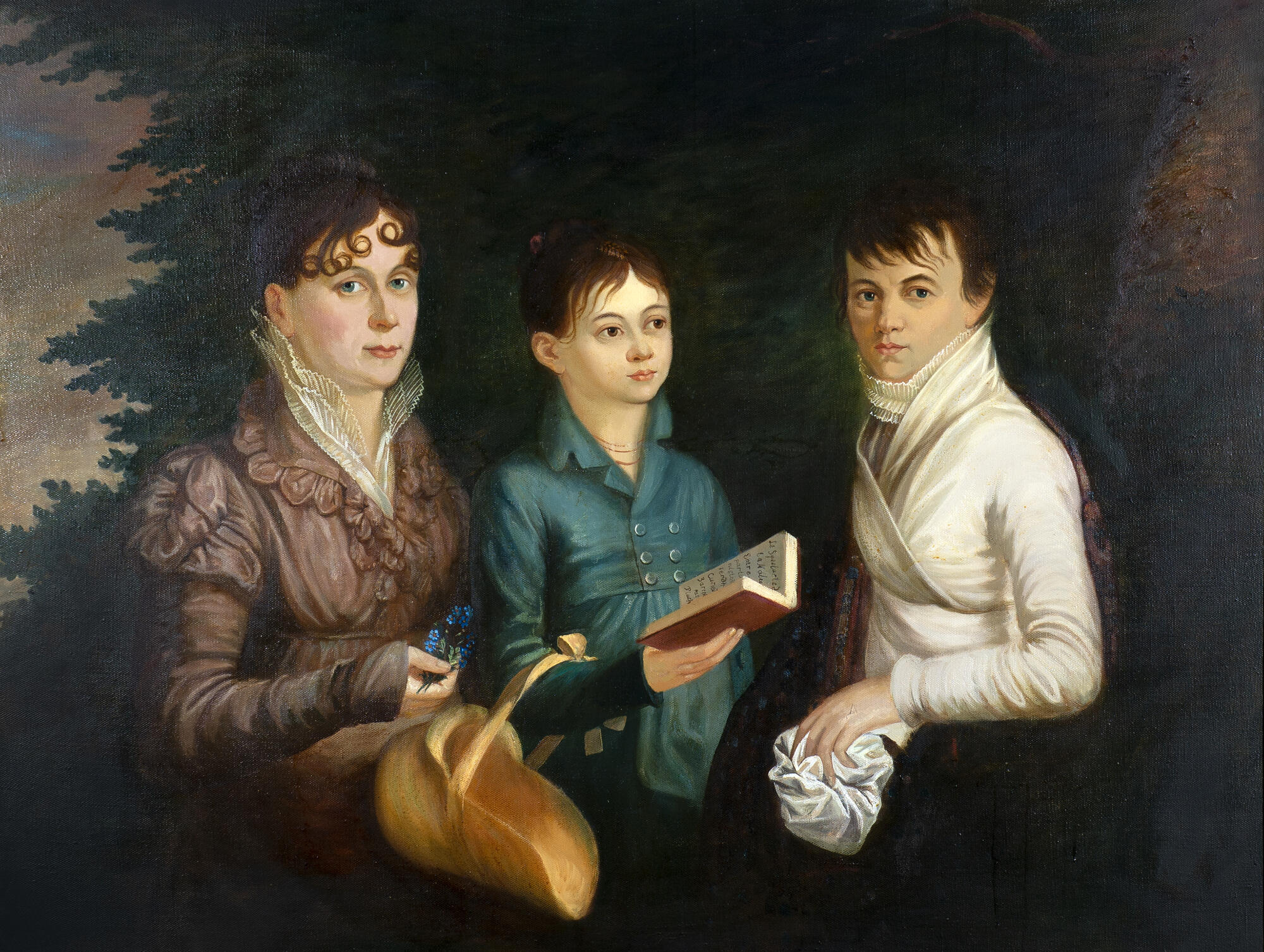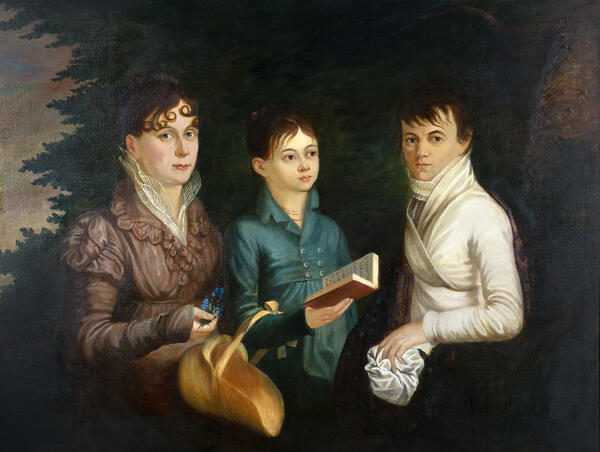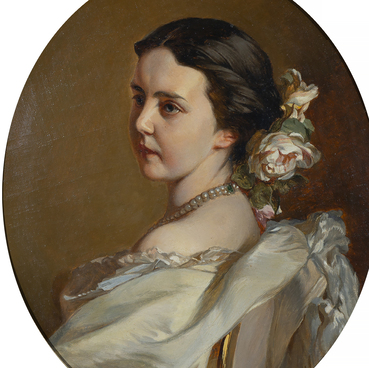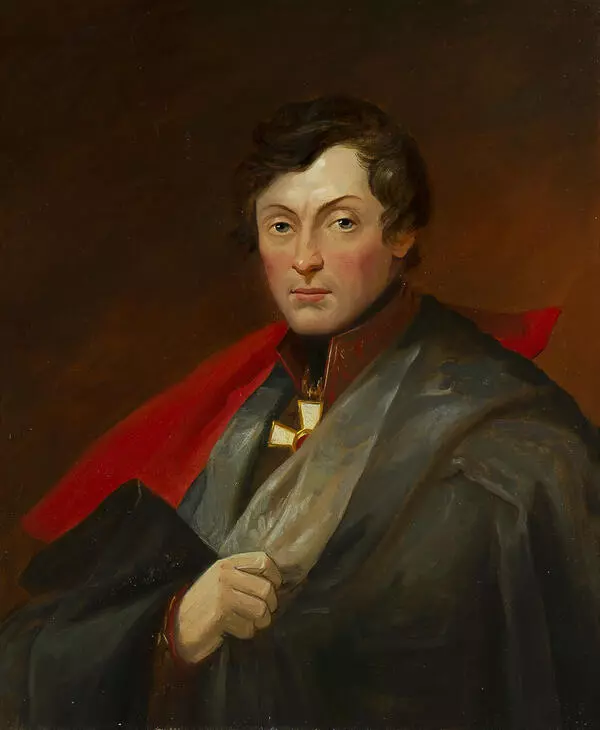Evdokiya Meshcherskaya was Fyodor Tyutchev’s aunt. Her portrait with her daughter Anastasia Meshcherskaya (her married name was Ozerova) and pupil Elizaveta Elchaninova was painted by the artist Yefim Spazhinsky in 1807, and the copy for the museum collection was made by the Bryansk artist Mikhail Reshetnev.
Evdokiya was married to Lieutenant Prince Boris Meshchersky, who caught a cold while hunting and died two months after the wedding. After her husband’s death, Evdokiya devoted herself to charity and raising their daughter. Meshcherskaya left a legacy of her works ‘Notes’ and ‘Conversations with my daughter’, which were published in 1876.
Meshcherskaya founded the Boris and Gleb Convent near Zvenigorod in memory of her husband and became the abbess there. In the convent, Evdokiya led an ascetic lifestyle and even slept on a board covered only with felt.
The original portrait was painted in Polotsk. This probably happened when Meshcherskaya, her daughter and friend were undertaking pilgrimage to the relics of St. Euphrosyne of Polotsk. In 1812, during the war, a French officer damaged the canvas with a saber. The French attacked so quickly that Meshcherskaya and her servants had to leave the Anosino estate near Zvenigorod in a hurry, having no time to hide anything or to take along. The French plundered the house and destroyed whatever they could not take with them.
After her daughter had married Senator Semyon Ozerov, Meshcherskaya became a nun and remained the abbess until her death. Later, her eldest granddaughter Evdokiya Ozerova also became the abbess of this convent, which was renowned for its strict rules and extraordinary piety. In 1928, the ‘women”s Optina’, as the convent was called, was closed. One of the nuns of the monastery brought the historical portrait to Muranovo.
Tyutchev loved and respected his aunt, for him she was a living example of a true Christian: patient, gentle, obedient, compassionate to other people and hardworking. She was a talented teacher — this gift was revealed in her epistles to her daughter and granddaughters. When teaching, Evdokiya kept regular correspondence with Metropolitan Philaret and was guided by his advice.
Evdokiya was married to Lieutenant Prince Boris Meshchersky, who caught a cold while hunting and died two months after the wedding. After her husband’s death, Evdokiya devoted herself to charity and raising their daughter. Meshcherskaya left a legacy of her works ‘Notes’ and ‘Conversations with my daughter’, which were published in 1876.
Meshcherskaya founded the Boris and Gleb Convent near Zvenigorod in memory of her husband and became the abbess there. In the convent, Evdokiya led an ascetic lifestyle and even slept on a board covered only with felt.
The original portrait was painted in Polotsk. This probably happened when Meshcherskaya, her daughter and friend were undertaking pilgrimage to the relics of St. Euphrosyne of Polotsk. In 1812, during the war, a French officer damaged the canvas with a saber. The French attacked so quickly that Meshcherskaya and her servants had to leave the Anosino estate near Zvenigorod in a hurry, having no time to hide anything or to take along. The French plundered the house and destroyed whatever they could not take with them.
After her daughter had married Senator Semyon Ozerov, Meshcherskaya became a nun and remained the abbess until her death. Later, her eldest granddaughter Evdokiya Ozerova also became the abbess of this convent, which was renowned for its strict rules and extraordinary piety. In 1928, the ‘women”s Optina’, as the convent was called, was closed. One of the nuns of the monastery brought the historical portrait to Muranovo.
Tyutchev loved and respected his aunt, for him she was a living example of a true Christian: patient, gentle, obedient, compassionate to other people and hardworking. She was a talented teacher — this gift was revealed in her epistles to her daughter and granddaughters. When teaching, Evdokiya kept regular correspondence with Metropolitan Philaret and was guided by his advice.









